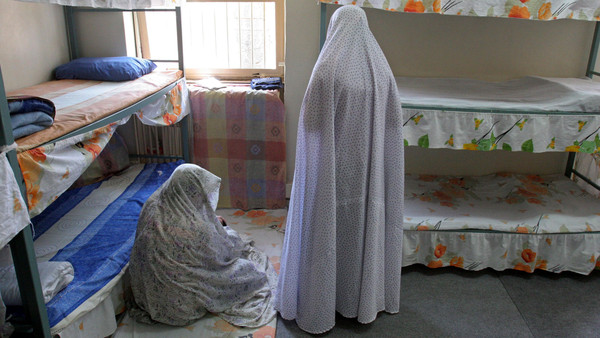Is criticizing extremist Shiites sectarian?
Monday, 15 June 2015
Abdulrahman al-Rashed/Al Arabiya
Some have found it difficult to use terms such as “Shiite”, “Sunni” and “Alawite” when describing events in Iraq, Syria and Yemen. It is unpleasant to categorize and divide people according to their beliefs. Political disagreements used to be over intellectual ideologies and patriotic affiliations, but now religion is politics. Clerics have become politicians, and religious groups have become political parties.
They include Hezbollah, the Islamic State of Iraq and Syria (ISIS), Ansar Allah, Al-Nusra Front, and League of the Righteous. Many thought political Islam would unite the region’s peoples, but this has not been the case. An example is the hostility between the Shiite Hezbollah and the Muslim Brotherhood. Sunni Islam has itself become divided, with extremist groups such as Al-Nusra Front and ISIS slaughtering each other.
Observers cannot but describe these wars as sectarian. Some have been frightened by this description because of its association with hideous crimes. Some have denounced my description of certain Shiite parties as terrorists, just as others have condemned my description of some Sunni groups as terrorists.
Criticizing Shiite militias does not express Sunni sectarianism as long as we hold both sides to the same moral standards.
Some Shiite and Sunni intellectuals consider Hezbollah a moral and sacred organization that must not be included in the same category as other terrorist groups. However, I have always viewed Hezbollah as a party with an eliminatory, extremist ideology that believes in resorting to violence against people of its own sect should they disagree with it. Hezbollah has also been responsible for assassinations of its Arab rivals inside and outside Lebanon.
A matter of principle
The fact that Hezbollah spent most of its active years confronting Israel does not justify the party imposing its ideology and presence on others. The same applies to violent Sunni groups. We have spent some 15 years confronting Salafist jihadist groups such as Al-Qaeda, and we are currently confronting ISIS and Al-Nusra Front. Therefore, our stance is based on principles, not selectivity between violent Sunni and Shiite groups. The same applies to the organizational Alawite ideology of Bashar al-Assad’s sectarian group in Syria. Criticizing Shiite militias does not express Sunni sectarianism as long as we hold both sides to the same moral standards.
The importance of intellectual figures is that they are society’s leaders. Although they are the least sacrificing or involved in fighting, they guide and influence society’s different parties. The Arab Spring led to people conflating Assad with Alawites, Hezbollah with Shiites, and ISIS with Sunnis. As such, the need to confront sectarianism in politics has increased. It is impossible to overcome this crisis without intellectuals clearly condemning sectarian murder, violence in the name of religion, Sunni-Shiite divisions, the Syrian regime’s Alawites, and the Houthis in Yemen. No one will emerge victorious from sectarian wars, which could last for decades.
Inside Iran: Tehran’s notorious Evin Prison
By Staff writer | Al Arabiya News
Sunday, 14 June 2015
With a capacity now detaining 15,000 people, the Evin Prison has built a reputation of being Iran’s most notorious prison.
Located in northwestern Tehran, the facility has been nicknamed “Evin University” due to the large number of intellectuals, political prisoners, journalists and academics that have been incarcerated there. This article is based on the following report, part of the Inside Iran series by Al Arabiya News Channel. It was the subject of the 2014 film “Rose Water,” written and directed by U.S. TV personality Jon Stewart, which told the story of an Iranian-Canadian journalist who was detained after covering the protests that broke following the re-election of Mahmoud Ahmadinejad. Maziar Bahari survived 118 days in detention and was released after a confession he said was extracted after days of physical and psychological torture.
Bahari’s account mirrors that of human rights organizations which attribute the prison’s notoriety to the brutality of the guards. The People’s Mojahedin Organization of Iran, a prominent opposition group based in Paris, describes it as “hell on earth.” The first prisoners entered Evin in 1971 under the rule of Shah Mohammad Reza Pahlavi. He used it as a detention center for his opponents, and Evin could only hold 320 prisoners back then. After the 1979 revolution, the Iranian leadership used it to quell its own political opponents. Human rights activists say they have documented systematic abuses there, including torture.
Iranian – Canadian photojournalist Zahra Kazemi died in Evin due to what her family said was an injury sustained during torture. More recently, a wave of assault was reported to have taken place on 2014 April 17, in an incident local activists called “Black Thursday,” according to Amnesty International. Prisoners held in Section 350 of the prison, where political prisoners and intellectuals are usually held, were subjected to assault, beatings, verbal abuse and some of those injured were denied access to medical care.
“Security officials responded with an appalling level of brutality to the protest at Evin prison, beating prisoners, dragging them along the floor and verbally insulting them. Subjecting prisoners to such ill-treatment is a gross abuse of a prison official’s power,” Said Boumedouha, Deputy Director of Amnesty International’s Middle East and North Africa Program said. Despite its history, the mayor of Tehran plans on converting Evin into a park, a decision that was met with mixed reactions. Moving the 15,000 prisoners out of Tehran may cause more hardship for the detainees and their families, one opinion piece in the Asr-e Iran news website said, according to the BBC. While the Ebtekar newspaper said that “converting the prison into a museum or park has been a long-time wish of many citizens,”“It is good news as Evin is among the few regions in Tehran that has good weather and the city’s residents could make good use of the park.






















